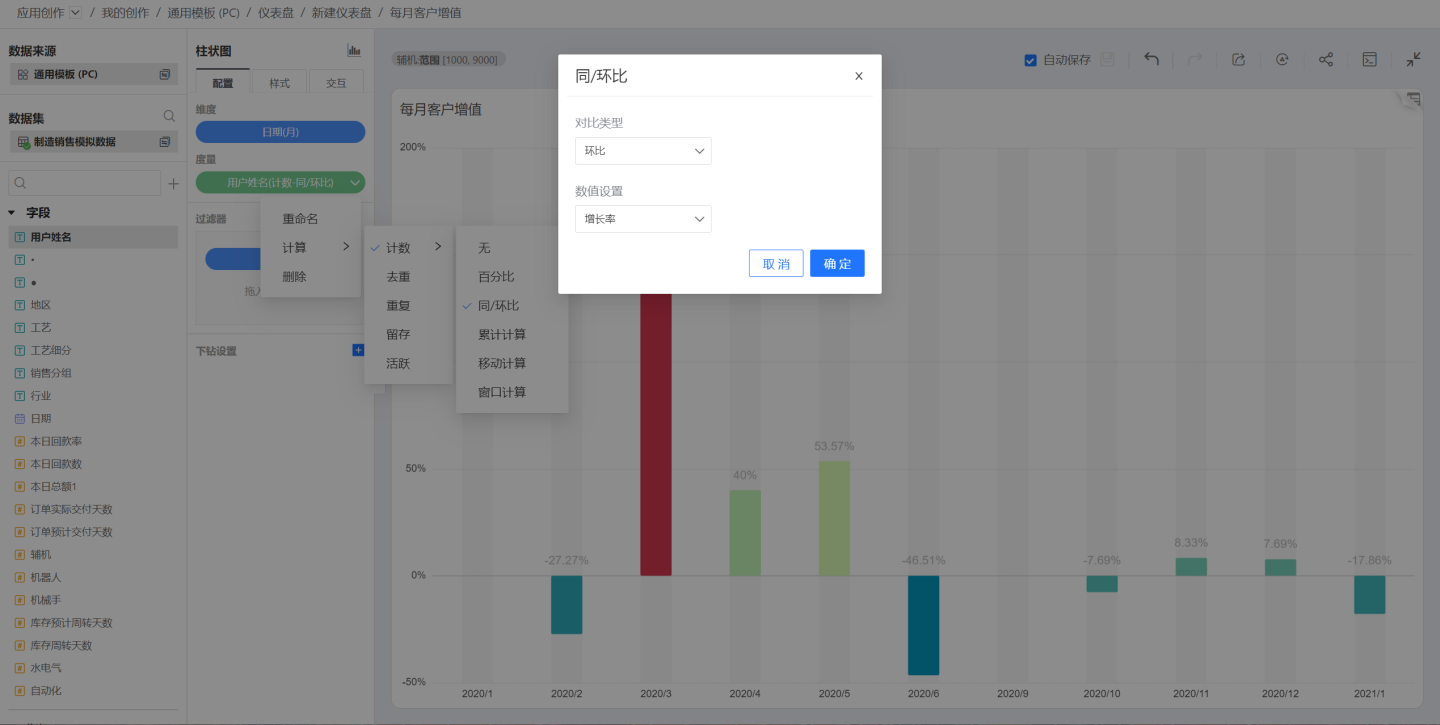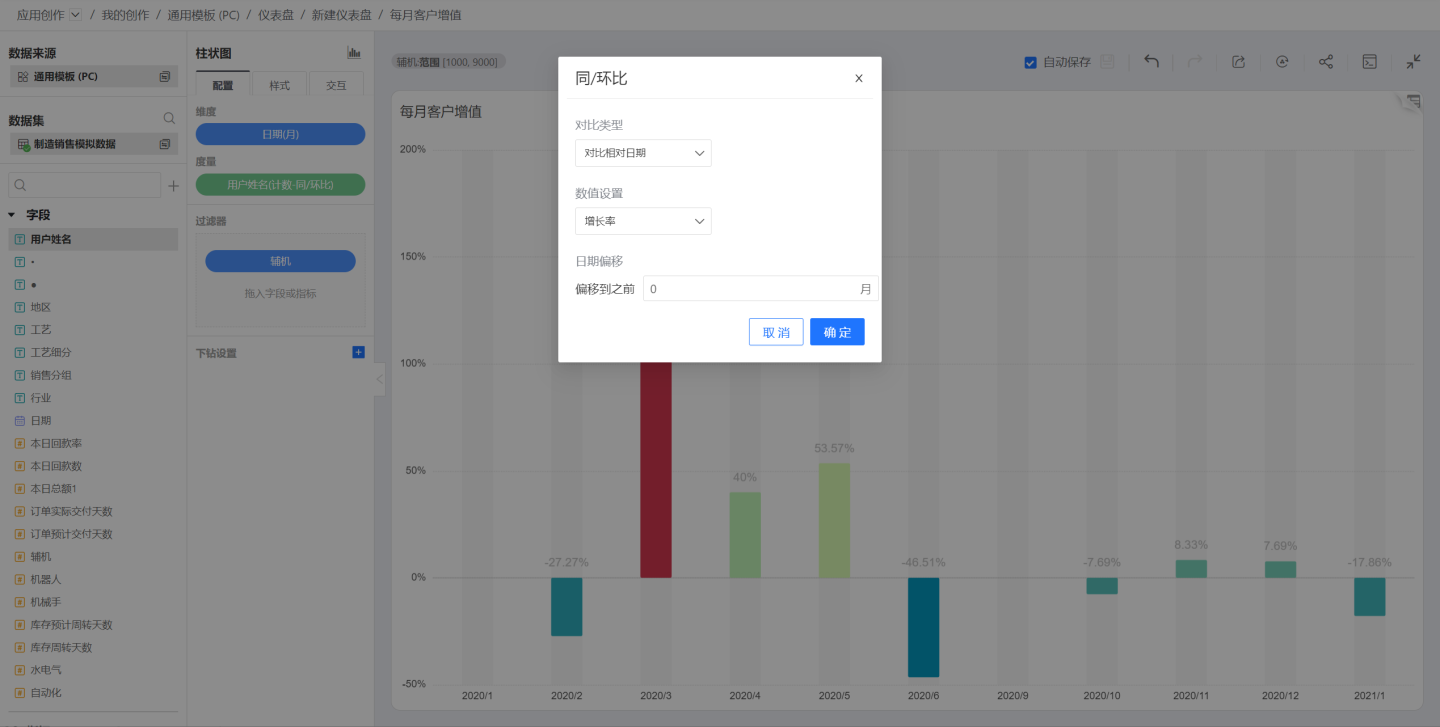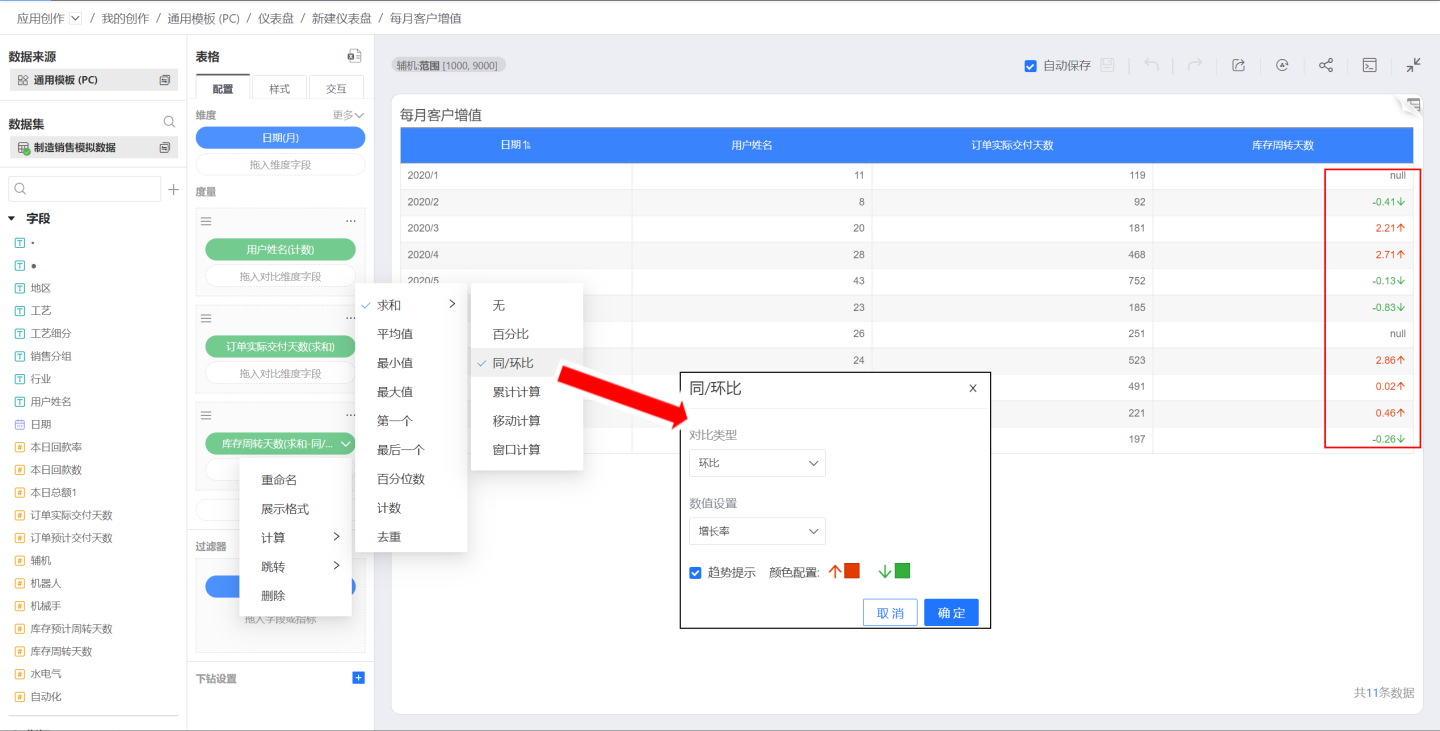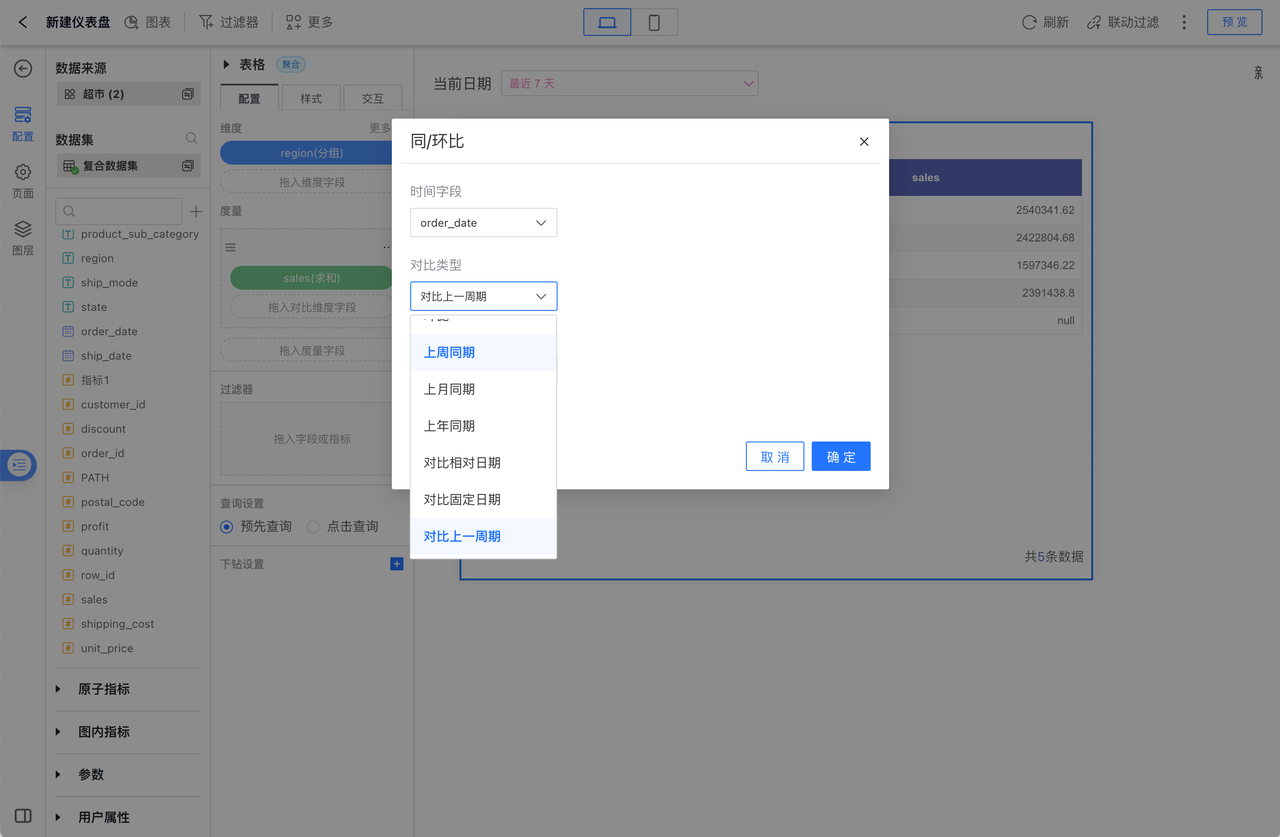Year-over-Year and Month-over-Month
The minimum dimension aggregation method supported by Year-over-Year and Month-over-Month calculations is "Day," and the maximum is "Year." The menu position for Year-over-Year and Month-over-Month is shown in the figure below:

Year-over-Year and Month-over-Month not only support previous period comparisons but also allow specifying relative dates, as shown below: 
Year-over-Year and Month-over-Month in tables support "Trend Tips." As shown below, after checking "Trend Tips" during the calculation, the displayed trend tips: 
Time Dimension YoY/MoM Interaction
When switching the aggregation unit of the time dimension (day, week, month, quarter, year), the content of the "Comparison Type" dropdown list will automatically adjust:
| Time Dimension Aggregation | MoM | Week | Month | Year | Comparison Relative Date |
|---|---|---|---|---|---|
| By Day | MoM | Same Week Last Year | Same Month Last Year | Same Year Last Year | Previous N Days |
| By Week | MoM | - | - | Same Year Last Year | Previous N Weeks |
| By Month | MoM | - | - | Same Year Last Year | Previous N Months |
| By Quarter | MoM | - | - | Same Year Last Year | Previous N Quarters |
| By Year | MoM | - | - | - | Previous N Years |
When switching the aggregation unit of the time dimension (day, week, month, quarter, year), the selected content of the "Comparison Type" will be adjusted accordingly and recalculated. When switching the time dimension aggregation unit, if the same type cannot be found in the "Comparison Type" dropdown list, the advanced calculation will be canceled and become "None". For example, if the time dimension was previously aggregated by day and we selected "Same Week Last Year", then when we switch the time dimension to aggregate by week, we cannot find the "Same Week Last Year" comparison type, so at this point, the advanced calculation should be canceled and become "None".
Compare with Previous Period
In the Chinese context, year-over-year (YoY) and month-over-month (MoM) comparisons, in the English context, MoM, QoQ, and YoY, traditionally compare based on natural months, quarters, and years. For example, the year-over-year sales growth from June 1, 2024, to June 18, 2024, generally refers to the growth compared to the same period in the previous year, which is from June 1, 2023, to June 18, 2023. The month-over-month growth, on the other hand, compares the growth from May 1, 2024, to May 18, 2024. Sometimes, we want to compare with a specified continuous period. For example, if we have 18 days from June 1, 2023, to June 18, 2023, and we want to compare it with the immediately following 18 days, which is from June 13, 2023, to June 30, 2023, to observe the real-time status of the 618 Grand Promotion, we can use the Compare with Previous Period feature in the same-period comparison. 
Same-Period and Year-on-Year Interaction for Non-Time Dimensions
"Comparison Type" corresponding to different time dimension aggregation units:
| Time Dimension Aggregation Unit | MoM | Same Week Last Year | Same Month Last Year | Same Year Last Year | Relative Date | Fixed Date |
|---|---|---|---|---|---|---|
| By Day | MoM | Same Week Last Year | Same Month Last Year | Same Year Last Year | Today/Yesterday/Previous N Days, Compare with Previous M Days | Specify Certain Days, Compare with Certain Days |
| By Week | MoM | - | - | Same Year Last Year | This Week/Last Week/Previous N Weeks, Compare with Previous M Weeks | |
| By Month | MoM | - | - | Same Year Last Year | This Month/Last Month/Previous N Months, Compare with Previous M Months | |
| By Quarter | MoM | - | - | Same Year Last Year | This Quarter/Last Quarter/Previous N Quarters, Compare with Previous M Quarters | |
| By Year | MoM | - | - | - | This Year/Last Year/Previous N Years, Compare with Previous M Years | |
| When switching the aggregation unit of the time dimension (day, week, month, quarter, year), if there is a corresponding option, switch to it (for example, when comparing relative dates, yesterday compared with the previous 3 days, when switching to weekly aggregation, it can become last week compared with the previous 3 weeks). If there is no corresponding option, directly switch to "MoM". |